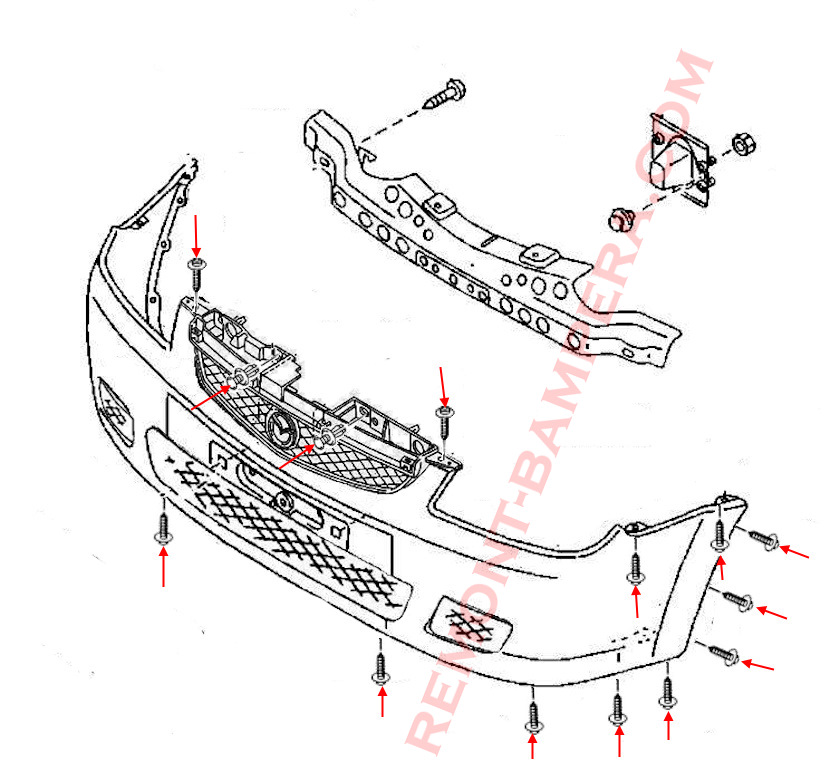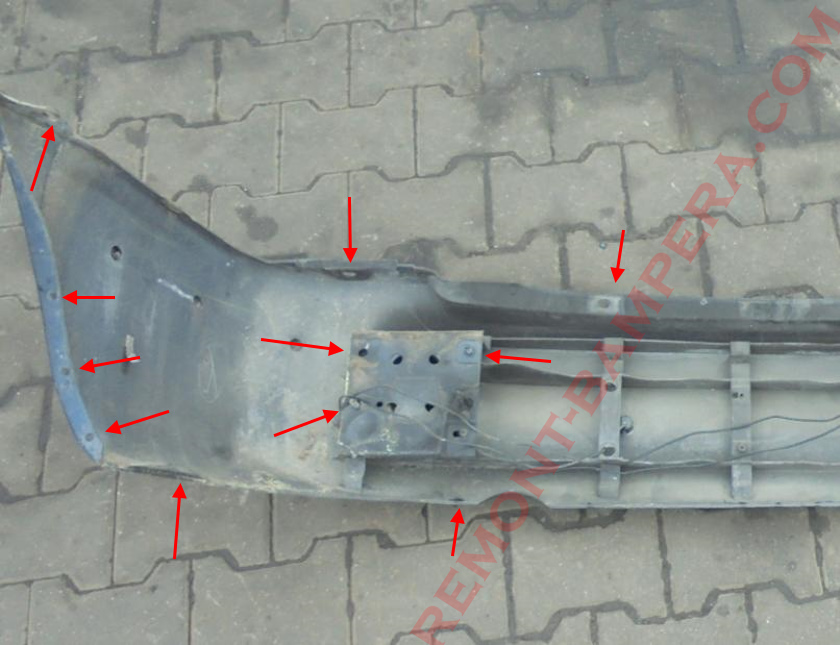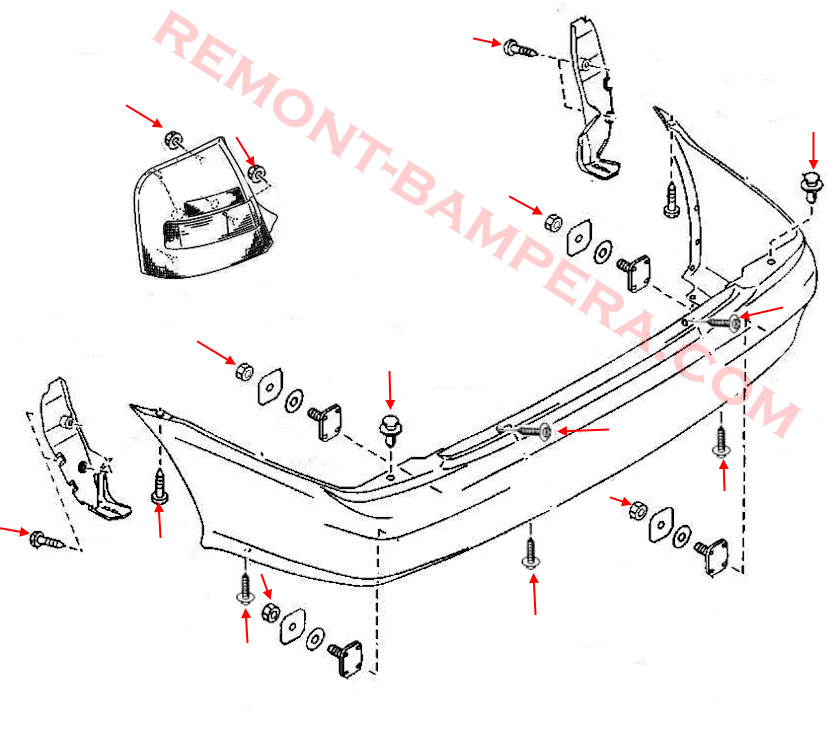The Mazda 323 VI, known internally as the BJ, is the sixth generation of the popular Mazda 323 compact car. This model was produced from 1998 to 2003, replacing the previous BA generation and being succeeded by the BK. In different regions, the Mazda 323 BJ was sold under alternative names:
- Mazda Protegé - in North America
- Mazda Familia - in Japan and some other Asian countries
- Mazda Allegro - in Argentina (sedan version)
Model Code and Facelift
The BJ platform received an updated design compared to its predecessor, featuring a more rigid body and improved suspension. In 2001, Mazda conducted a facelift that primarily affected the front end: the headlight shape, radiator grille, and bumper were changed. The taillights and small interior details were also updated.
Body Types and Modifications
The Mazda 323 BJ was offered in several body styles:
- Sedan (4-door) - the most popular version, especially in North America and Asia
- Hatchback (5-door) - in demand in Europe for its compactness and practicality
- Station wagon (5-door, known as Mazda 323F or Familia Van in Japan) - less common but valued for its spaciousness
Bumper Plastic Marking: >PP<
How to Remove Front Bumper
- Open the hood.
- Under the hood, unscrew two screws and remove two clips securing the front part of the bumper and radiator grille.
- From underneath, unscrew eight screws (installed bottom-up) securing the lower part.
- Turn the wheels to the side.
- In the wheel arches, unscrew three screws on each side securing the fender liners (front part).
- Move the fender liners aside and unscrew two screws on each side (installed bottom-up) securing the bumper corners to the fenders (note: these screws break easily).
- With an assistant, remove the front bumper by pulling it forward (be careful not to damage wires).
- Disconnect connectors for fog lights (if equipped).


How to Remove Rear Bumper
- Open the trunk lid.
- Unscrew two screws in the trunk opening.
- Remove interior trunk trim panels (to access rear lights and rear panel).
- Behind side trim panels, unscrew nuts and remove rear lights.
- Below the lights, remove two clips.
- From underneath, unscrew four screws (installed bottom-up) securing the lower part.
- In wheel arches, unscrew screws securing fender liners.
- Move fender liners aside and unscrew one screw on each side (installed bottom-up) securing bumper corners to fenders.
- Unscrew six nuts securing brackets to rear panel (four nuts accessible from trunk, two from underneath - note: the studs break easily).
- With an assistant, remove rear bumper by pulling it backward (watch for wires).
- If equipped, disconnect electrical connectors.


Engines and Transmissions
The model featured a wide range of gasoline and diesel engines depending on market:
Gasoline:
- 1.3L (ZM-DE, 75–90 hp)
- 1.5L (ZM-DE, 100–110 hp)
- 1.6L (ZM-DE, 105–125 hp)
- 1.8L (FP-DE, 125–140 hp)
- 2.0L (FS-DE, 140–150 hp) - in sport versions Mazda 323 Protegé MP3 (USA) and Mazdaspeed Familia (Japan).
Diesel (European market):
- 1.5L (Y5, 75 hp)
- 2.0L (RF, 90 hp)
Transmissions included 5-speed manual, 4-speed automatic, or (in some versions) 5-speed Activematic semi-automatic.
Model Description
The Mazda 323 BJ featured balanced suspension providing city comfort and confident highway handling. The interior was simple but ergonomic with quality materials for its class. Top trim levels offered air conditioning, power package, leather trim and sunroof.
Safety met late 1990s standards: ABS, airbags, but no stability control (ESP).
Interesting Facts
Sport Versions:
Mazdaspeed Familia (Japan) had turbocharged 1.8L engine (180 hp), sport suspension and exclusive design.
Protegé MP3 (USA) was co-developed with Mazdaspeed and featured tuned suspension, Pioneer audio system and unique 17-inch wheels.
Racing Career: The Mazda 323F (hatchback) competed in rally events including JWRC (Junior World Rally Championship).
Successor: In 2003, the 323 BJ was replaced by new Mazda 3 (BK) based on Ford C1 platform (shared with Volvo S40 and Ford Focus II).
Rare Variant: Japan offered Mazda Familia Van with high roof and enlarged trunk, but it was rarely exported.
Conclusion
The Mazda 323 BJ remains in history as a reliable and practical car combining Japanese quality and affordability. Its sport versions are particularly valued by collectors, while regular models still appear on roads thanks to their durability.

 English
English  Italiano
Italiano  Français
Français  русский
русский  Deutsch
Deutsch  Español
Español